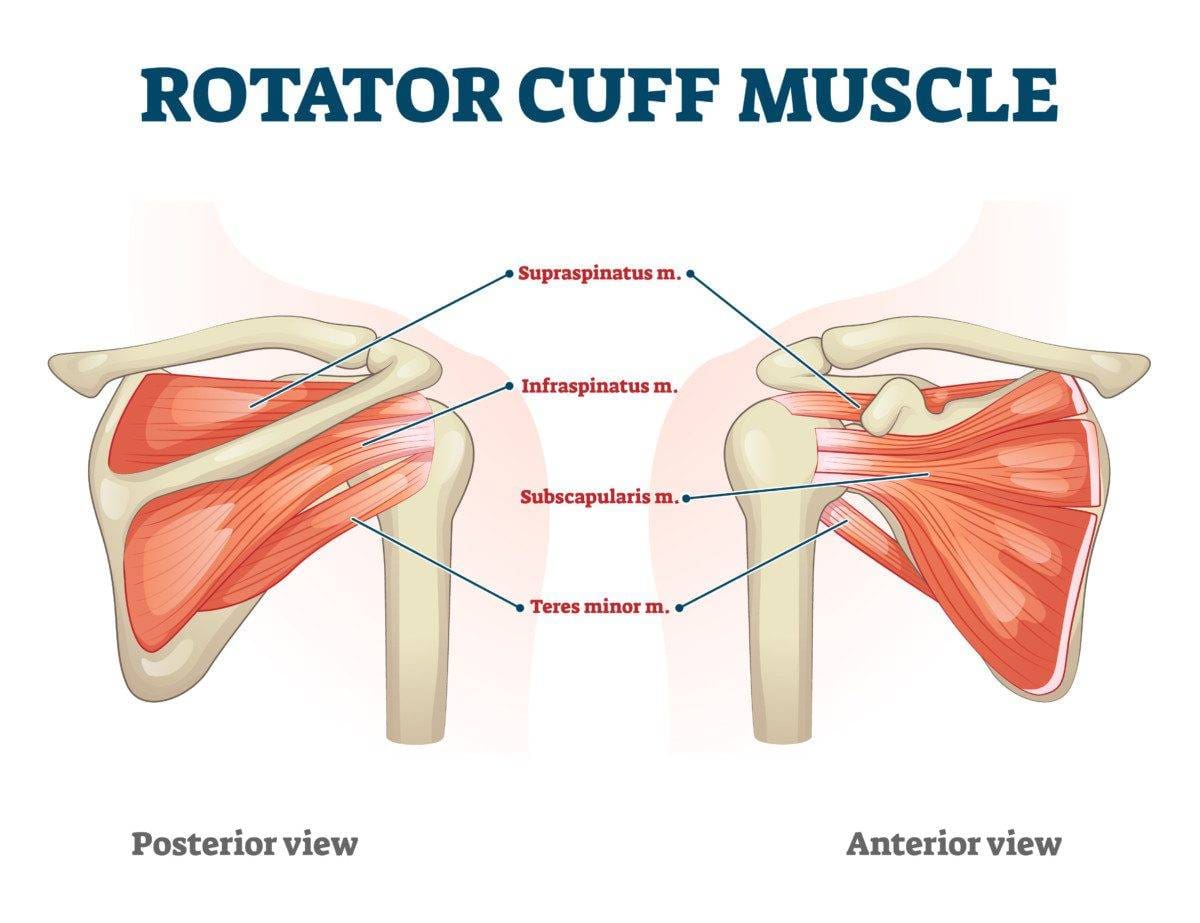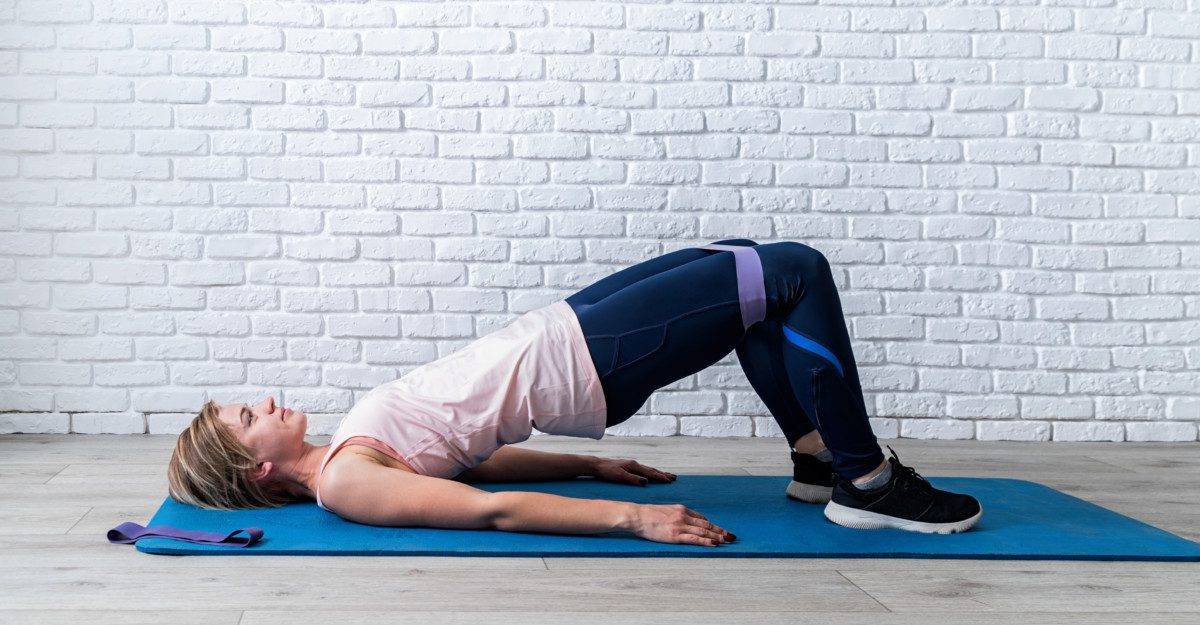By Dr. Richard Thompson, DC
Golf is one of the most popular sports played by the general public in North America and this is especially true following the shift in choices for outdoor recreational activities following the onset of the pandemic. Of all the sports that my patients participate in, maybe with the exception of running, golf seems to be the sport that returns to play is at the forefront of priorities for anyone suffering from an injury. What’s the only thing better than a quick recovery and return to the game? Preventing injury in the first place! Most golf injuries that I see in clinical practice are preventable and only require a little bit of knowledge and investment in time to perform simple preventative measures to reduce the risk of injury. Let’s examine some of the most common golf-related injuries I see in practice and discuss effective, easy strategies to help you avoid them!
Rotator Cuff Injuries
The rotator cuff is the set of 4 muscles and tendons that support the shoulder joint. They help support movement, but their most important function is to provide and enhance the stability of the joint during movement. The shoulder joint can move through an incredibly large range of motion because of its very flat, shallow socket. Because of this, the rotator cuff has a unique responsibility to provide a tremendous amount of overall stability for the joint. The golf swing, which is a very complex sequence of movements, transfers a massive amount of force from the golf club up through the arms and into the torso. The rotator cuff helps provide protection to the shoulder during the golf swing, which reduces the likelihood of injury. That being said, our rotator cuff muscles/tendons tend to become quite tight and dysfunctional, not from use during sports, but from misuse during basic everyday activities. Here are some of the most common lifestyle considerations to assess to help avoid rotator cuff pain and injury:
- Sleep positions: I believe that this is one of the most common causes for should joint problems. Sleeping with your arms above your head or under your pillow while sleeping on your side or stomach is almost guaranteed to lead to rotator cuff dysfunction. This creates prolonged ‘pinching’ of the tendons around the bones of the should blade, creating tissue irritation, inflammation, and pain. Instead, try side sleeping with hugging a large body pillow in front of you or sleeping on your back with your arms to your side.
- Shoulder Press Technique: Overhead shoulder presses are one of the most commonly performed shoulder exercises, but they are almost always performed in a way that predisposes us to rotator cuff impingement. Instead of pressing directly overhead with the hands/arms immediately to your sides (called the frontal plane), try pressing with your elbows about 15º forward (called the scapular plane), so that the resistance is slightly ahead of you. Even without weight in your hands, try to perform both versions and you will see how much more naturally you can raise your hands overhead in the scapular plane.
- Shoulder Blade Dysfunction: The shoulder blade forms a pseudo-joint with the torso through its connections to the rib cage or thoracic wall, called the scapulothoracic joint. This joint is critical for the normal function of the shoulder joint, as it dictates how the shoulder joint moves based on the position/mobility of the shoulder blade. Dysfunctional scapulothoracic movement is frequently caused by postural syndromes in the upper back and neck, typically from prolonged computer and/or cell phone use. Assess your workstation for ways to improve your ergonomics and reduce postural stress on your upper back and neck. Not only will you reduce neck and back pain, you will also see reduced risk of rotator cuff injuries.

Hip Pain
Hip pain or conditions related to pain around the hip joint are probably the most common lower-body injuries we see with golfers. The golf swing is just as much a lower body movement as it is a torso or upper body movement. It involves a sequence of properly timed, rhythmic, and sometimes explosive movements in order to generate power from the ground up and through the golf ball. It is also a very asymmetrical movement from one hip to the other, a risk factor for pain and injury to one or both sides of the low back or pelvis. Hip mobility is often limited with all of the daily activities (or lack of activities) we find ourselves performing on a regular basis. Because of this limited mobility, the golf swing becomes increasingly strenuous on the hips and low back, and after hundreds of swings per day (when you consider the driving range warm-up and practice swings prior to every shot), muscle dysfunction/tension, repetitive strain injury, and joint capsule irritation are just a few of the problems that can arise. Here are some important preventative considerations:
- Sitting is the new smoking: With the amount of sitting we do each and every day, we often see shortened hip flexor muscles (the iliopsoas, tensor fascia latae, and upper quadriceps muscles), contracted anterior hip joint capsule/ligaments, and deactivated gluteal muscles. This creates dysfunctional imbalances in the hips, decreased mobility, and an inability to generate force in the lower body through the golf swing. Try walking for 15 minutes prior to heading to the driving range or first tee, with 5-10 minutes of dynamic stretching for the hip, such as body weight squats and leg swings. Reduce your overall daily sitting time by using a sit-stand workstation. Work on hip and gluteal activation exercises to help these critical muscles generate strength.
- Hip mobility should be part of your weekly exercise/fitness routine. A dedicated stretching routine, especially after physical activity performed at least 2-3 times per week will greatly improve your hip mobility, and in turn, create better hip mobility and function for the golf swing. The routine should focus on all the major muscles that impact motion at the hip joint – gluteals, hip rotators, hamstrings, hip flexors, tensor fascia latae, and adductor (groin) muscles. Perform these stretches in a sequence all on one side, and then repeat the sequence from the top on the other side.

Elbow Injuries
The elbow joint is one of three major joints of the upper limb that help transfer energy/force from the golf club into the torso. It plays a critical role in both stabilizing a rigid lead arm as the club face makes contact with the golf ball and a hinge for the training arm in order to be able to rotate fully to generate torque through the torso prior to the downswing. The trail elbow also stabilizes the trail arm and helps turn the club face over after impact in order to keep the ball flight in line with your target. With either elbow, two of the more common injuries sustained at the elbow are lateral (outer) and medial (inner) epicondylitis, also known as tennis and golfer’s elbow, respectively. These injuries occur gradually, over time, and not suddenly because of one wrong swing. Although the pain and injury location is at the elbow, the problem is actually with the tissues in the forearm that control wrist and finger function. Tissue tension builds gradually, typically from repetitive strain through activities on and off the golf course. As tissue tension builds, the repetitive stress of these tissues causes inflammation to build near or at the attachment of these forearm tissues at the elbow, known as the epicondyle. Here’s how you can be proactive to reduce the likelihood of dealing with one of these types of elbow injuries:
- Stretches are one of the easiest ways to help maintain forearm function/mobility. Make sure to stretch both the wrist and finger flexors (front) and extensors (back) by making sure you take your fingers and wrist into a maximal stretch. These should be done following exercises, especially following any upper body exercises or sports.
- Grip Size: The size of your grip could be the cause of epicondylitis if the grip size (diameter) is not appropriately matched to your hand size. In most cases, grips can be too small for the size of your hand, causing you to have to grip the club much more firmly than necessary. This puts strain on the forearm and can lead to tissue contracture, repetitive strain, and subsequent injury at the elbow.
- Wrist & Elbow Warm-Ups: Before swinging the club, warming up the wrist and forearm is one of the easiest ways to help prep the upper limb for golf. With a club in your hand, hold the club midway down the shaft, and rotate the wrist in both directions with both the elbow bent first and then the elbow straight. Holding a club with both hands out in front of you, perform wrist extension (backward) and flexion movements to help loosen the muscles of the forearm.

Regardless of your golf performance level, the frequency of play, or the amount of rounds you get in per year, simple preventative measures to help avoid golf injuries are the best way to keep you in the game and injury-free! If you have or are currently struggling with golf-related injury or pain, we’re here to help! Our team of dedicated healthcare providers will listen to your concerns, determine the problems and causes that lead to the injury, and formulate a patient-specific plan for a fast and effective recovery from the injury! Trust the Active Approach to Help You Get Back To Your Active Life!

If you have been watching any of the FIFA World Cup so far, specifically news regarding the Canadian Men’s Team, you probably would have heard quite a bit about hamstring injuries, as Canadian soccer superstar Alphonso Davies is currently recovering from a hamstring injury that he suffered in early November. Furthermore, when looking at the injury report for all of the 2022 World Cup teams, hamstring injuries outnumber all other injuries reported. Hamstring strains are no joke, especially when you are a soccer player. It is very important through the recovery phase of hamstring strains that you allow the muscle proper time to heal before returning to activity/sport. Based on the severity of the strain, recovery timelines can range from three weeks to three months. Effective treatment options following an accurate diagnosis can help decrease this recovery time by utilizing some of the treatment options listed above, as well as the addition of acupuncture/dry needling that helps decrease pain and increase blood flow to the area by specifically targeting tight and aggravated bands of tissue with an acupuncture needle. Graston Technique®, which is an instrument-assisted soft tissue mobilization treatment option that we would utilize to help break down associated scar tissue and fascial restrictions in the hamstring muscles and surrounding area to further speed recovery.
Although this article has been focused on the two most common soccer-related injuries, ankle sprains, and hamstring strains, we utilize the aforementioned treatment techniques to treat a vast range of injuries, sport-related or not. If you sustained an injury, recent or old, and are still dealing with associated symptoms or functional impairments, we’re here to help! Book a consultation appointment with one of our skilled healthcare professionals and we’ll get you on the road to recovery and Get You Back to Your Active Life!

